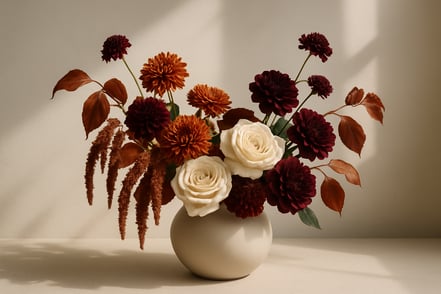In a retail flower shop, selling is more than simply placing products on shelves. To truly connect with customers—and increase your average sale—you need to create a shopping experience. One of the most powerful tools at your disposal is visual storytelling.
Well-crafted displays do more than showcase your products; they invite customers into a story. They offer inspiration, spark emotion, and help people picture how your flowers and gifts will fit into their lives. When done right, your shop becomes not just a store, but a source of ideas, feelings, and beauty.
Let’s explore how visual storytelling can help you sell more—and make your shop a place customers love to visit.
The Emotional Power of Displays
People don’t just buy flowers—they buy what the flowers represent: love, gratitude, comfort, celebration, and memories. That’s why stories matter. A display that tells a story taps into emotion and offers a vision customers want to be part of.
Instead of lining up merchandise in rows, group it into scenes that speak to a specific mood or occasion. For example:
- A spring picnic display with daisies, pastel tableware, and lemonade bottles.
- A cozy autumn table set with sunflowers, candles, and copper mugs.
- A modern shelf with clean orchid plants, white vases, and a “home spa” vibe.
These visual cues help customers imagine how your products fit into their own lives. They see not just a bouquet, but a moment: a family dinner, a birthday brunch, or a self-care ritual.
Start with a Theme
Successful merchandising begins with a clear theme. This could be seasonal (Mother’s Day, back-to-school, fall harvest), emotional (joy, remembrance, romance), or lifestyle-based (urban jungle, farmhouse chic, minimalist elegance).
Select a theme that supports the current sales goals of your shop, then build your display around it. Choose props and products that align with the theme and tell a consistent story.
Remember, you’re not just arranging flowers—you’re creating a setting. Think like a set designer or photographer. What would make the scene feel real, aspirational, or inviting?
"We create visual displays that inspire and spark ideas for every customer who visits our flower shop", said Juamel Lorenzo, owner of 2 Lips Floral Design in Fort Lauderdale. "Bringing storytelling into every arrangement has truly changed the way people experience our shop. Our themed displays bring the stories behind our flowers to life, making each visit to 2 Lips Floral Design a memorable experience".
Anchor with Flowers, Layer with Lifestyle
In most cases, flowers should serve as the star of your display. Use one or two standout designs as your focal point, then layer in related merchandise: vases, greeting cards, gift items, plants, statuary, and even accessories like scarves or mugs.
Use risers, crates, or cake stands to create levels and depth. Drape linens or scarves to soften edges and guide the eye. Add signage that reinforces the story—something more than just a price. For example:
- “A Bloom for Every Thank-You”
- “Make Her Morning Brighter”
- “Welcome Fall with Warm Hues”
- “Holiday Memories”
These small narrative touches help transform a product into a gift, a gesture, or an experience.
Rotate and Refresh Regularly
Even the most beautiful display can grow stale if it never changes. Refresh your vignettes every few weeks to reflect the season, upcoming holidays, or new product arrivals. A fresh look invites return visits and keeps your shop feeling current and creative. Make a display or a corner of your shop look like home. This helps them visualize how the items will look in their home.
Use your camera to your advantage. Photograph your best displays and share them on social media. These visual stories work just as well online and can draw new customers into the store.
Train Your Team to Tell the Story
Your team plays a key role in continuing the story that your displays begin. Encourage them to reference your visual themes in their conversations with customers:
- “This arrangement was inspired by late summer sunsets.”
- “We built this look around that soft, cozy cabin feel.”
- “This line of containers pairs perfectly with our fall wildflower mix.”
When the whole team understands the story behind a display, they become more confident in guiding customer choices—and more likely to upsell.
From Browsing to Buying
The path to the register often begins with a feeling. By using displays that tell a visual story, you help customers feel connected, inspired, and confident in their choices. Flowers may be the focal point, but it’s the experience you create around them that makes all the difference.
Visual storytelling turns your shop into a destination—not just for flowers, but for meaning, beauty, and inspiration. And that’s what keeps customers coming back.
7/9/25 2:36 PM
.png?width=89&height=50&name=Blog%20Design%20(1).png)

